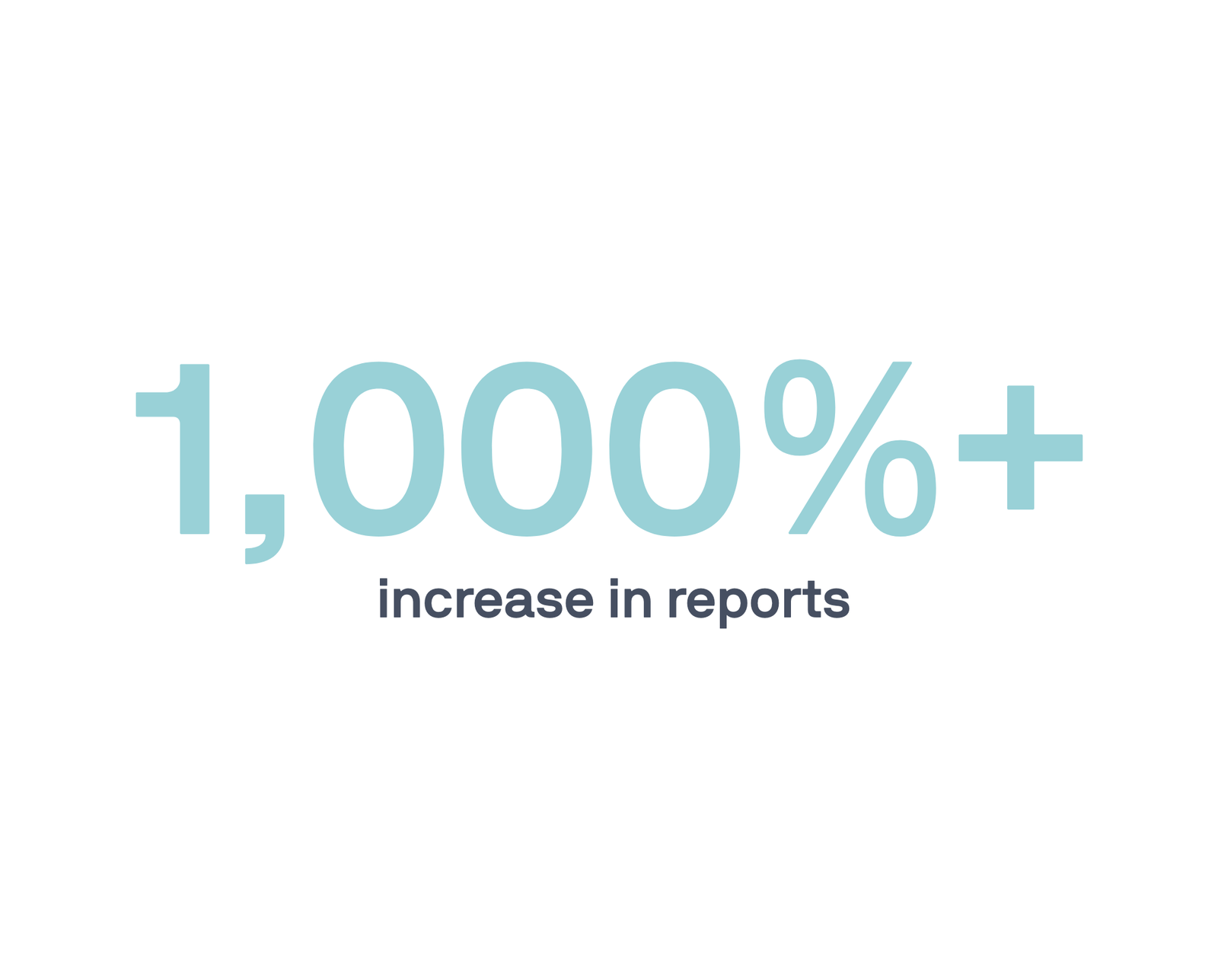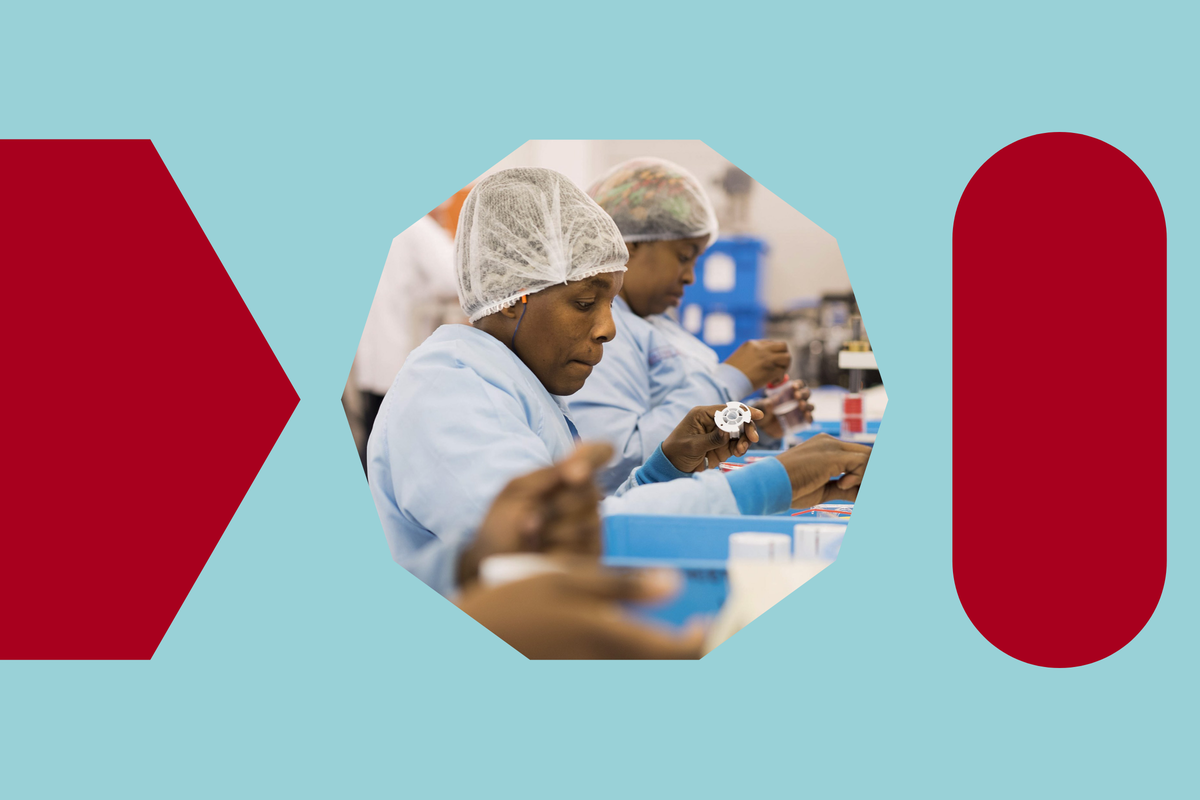Kenya hosts Africa’s largest AI health trial
In a major leap for digital health, PATH and partners launched a groundbreaking Phase 3 clinical trial in Nairobi, Kenya—the largest of its kind in Africa—testing how artificial intelligence (AI) can support frontline clinicians in diagnosing and treating patients.
At the center of the trial is a large language model-based tool designed to support primary health care providers in clinical decision-making by offering timely, guideline-informed suggestions to help improve patient care.

Oscar Macharia (left) and Naomi Nduitha (right), clinical staff at Penda Medical Centre in Nairobi, use AI to help diagnose patients and determine treatment plans. Photo: PATH/Monica Georges.
1 of 2 2 of 2
2 of 2
“By studying AI in real-world clinical settings, the trial seeks to answer big questions,” says Bilal Mateen, PATH’s Chief AI Officer. “Can AI reduce missed diagnoses? Can it improve care quality in low-resource environments? The answers could shape health care delivery across the continent—and beyond.”
This collaborative initiative includes PATH, the Kenya Paediatric Research Consortium, the University of Birmingham, and Penda Health. Kenya’s Ministry of Health has welcomed the trial as a milestone in the country’s digital health leadership.
The study is part of PATH’s broader efforts to explore how large language models can advance health equity in Kenya, Nigeria, and Rwanda.
From Honduras to Zambia: Digital tools drive vaccine equity
The COVID-19 pandemic disrupted routine immunizations worldwide, leaving millions of children unprotected and fueling vaccine hesitancy.
In response, PATH launched the DRIVE Demand project with support from The Rockefeller Foundation and Digital Square—harnessing the power of digital tools to boost vaccine access and trust across six countries.
In Honduras, digital “situation rooms” gave health workers real-time insights, helping reach remote areas. And in Mali, SMS and WhatsApp messages in local languages brought accurate health messaging to vaccine-hesitant communities.
In Tanzania, more than 300,000 vaccine-awareness messages reached caregivers, and in southern Thailand, tailored messaging built trust for routine vaccination among caregivers in hard-to-reach communities.

In Tanzania, a health worker reviews vaccine supply data on a tablet. Photo: PATH.
1 of 3 2 of 3
2 of 3
 3 of 3
3 of 3
Uganda trained 147 biostatisticians in geographic information systems (an advanced data tool), and Zambia modernized its immunization registry to support a unified digital platform.
What unites these diverse efforts? A belief in community-first, data-smart solutions. By combining behavioral science with digital innovation, DRIVE Demand helped close immunization gaps and laid the foundation for stronger, more responsive health systems.
This is more than a pandemic response—it’s a blueprint for resilient health care that reaches everyone.
Health services return to conflict-torn communities in northern Ethiopia
In Ethiopia’s Afar Region, where conflict once silenced health services, a powerful recovery is underway. Thanks to a partnership between PATH and Gavi, the Vaccine Alliance, vital care is returning to 70,000 people through restored health posts and services.
For Derbew Abebaw, head of the Lihada Health Post, the aftermath of war was deeply personal. His health post and home were ransacked, forcing him to hide medical tools across the community just to keep care alive. “We never stopped trying,” he said.
For Hawa Ali, a mother of three, the collapse of health services meant walking 6 kilometers to the nearest clinic—an impossible journey for many. “We had to beg for help just to carry a sick family member,” she recalled.

A renovated health post during its August 2024 handover ceremony. PATH and Gavi, the Vaccine Alliance supported repairs to help restore health services in conflict-affected areas. Photo: PATH/Saba Ermyas.
1 of 2
Derbew Abebaw points to broken health post windows damaged during conflict. Photo: PATH/Saba Ermyas.
2 of 2Today, the story is changing. Fourteen health posts across Afar’s Ewa, Tellalak, Ada’ar, and Chifra districts have been renovated and reopened, protecting thousands of children from deadly diseases like measles and pneumonia. But this recovery is more than brick and mortar.
These restored health posts represent resilience, healing, and a return to routine for families who have endured the unimaginable.
Improving access to safe medicines in Africa
In Africa, getting lifesaving medicines approved and delivered can be a complicated and costly process. Each country has its own regulatory system, requiring drug makers to fill out separate applications in each country, and making it difficult to move medical products quickly and safely across borders.
To change this, the African Union launched the African Medicines Agency (AMA)—a bold initiative to streamline medicine regulation across the continent.
AMA’s mission is simple but powerful: ensure that every African can access safe, effective, and affordable medical products by establishing one unified regulatory system that supports local production and speeds up approval processes for priority health needs.

(Left to right) Vuyo Mjekula, Dr. Abebe Genetu Bayih, Susan Lin (PATH), Chimwemwe Chamdimba, and Dr. Evans Sagwa pictured together at the 2024 African Union Summit. Photo: PATH.
1 of 3
African countries that have signed the AMA Treaty. Source: Health Policy Watch.
2 of 3 3 of 3
3 of 3
Since the AMA’s conception, PATH has played a key role in making it a reality. For more than five years, PATH has built awareness, trained advocates, and developed toolkits that help governments adopt AMA in their national systems.
The result? 39 out of 55 African countries have already signed the AMA Treaty, signaling widespread support for this transformative effort.
Thanks to strong collaboration between the African Union agencies, PATH, and national leaders, AMA is paving the way for regulatory harmonization—and a future where safe, high-quality medicines reach every person, in every corner of the continent, faster and more affordably than ever before.
Local heroes lead the fight against polio in the DRC
As poliovirus threatened communities in the DRC, a powerful force stepped up: the people themselves. PATH and partners launched a community-driven effort to improve disease surveillance and protect against outbreaks—revitalizing 13,000 community advisory committees and placing local champions at the heart of the response.

Community health workers, known as relais communautaires (ReCos), were selected by local leaders and trained to identify cases of acute flaccid paralysis—a key sign of polio. These trusted neighbors became the eyes and ears of the health system in areas where formal access is limited. And their impact has been remarkable.
In their first 39 weeks:
- Acute flaccid paralysis case reports increased by over 1,000 percent from the previous year.
- More than 90 percent of those reports came directly from ReCos.
- Lab results were faster and more reliable, with most cases investigated the same day they were flagged.
But this is about more than just numbers. It’s proof that communities don’t just receive care, they deliver it. Local surveillance is not a backup plan—it’s a frontline defense, strengthening the entire health system from within.
In the DRC, neighbors are protecting neighbors. And that’s changing everything in the fight against polio.
From vaccines and diagnostics to medical devices and digital tools, PATH creates and introduces health products that meet local needs and save lives.
From comprehensive primary health care to support services for infectious and chronic diseases, PATH makes good health more accessible by improving the care people receive.
2024 PATH annual report
Annual report home | Product development and access | Health and disease management | Health systems strengthening | Financial summary | Leadership | Supporters
